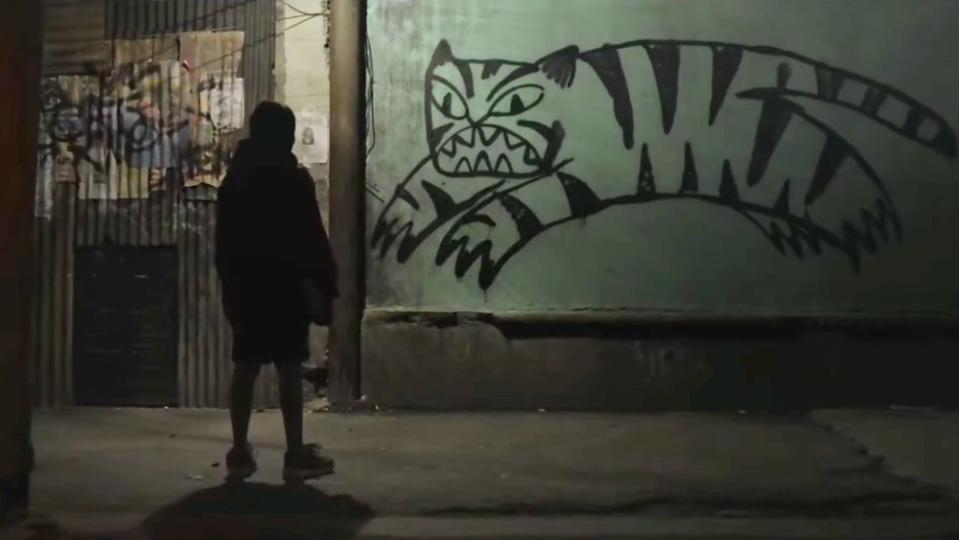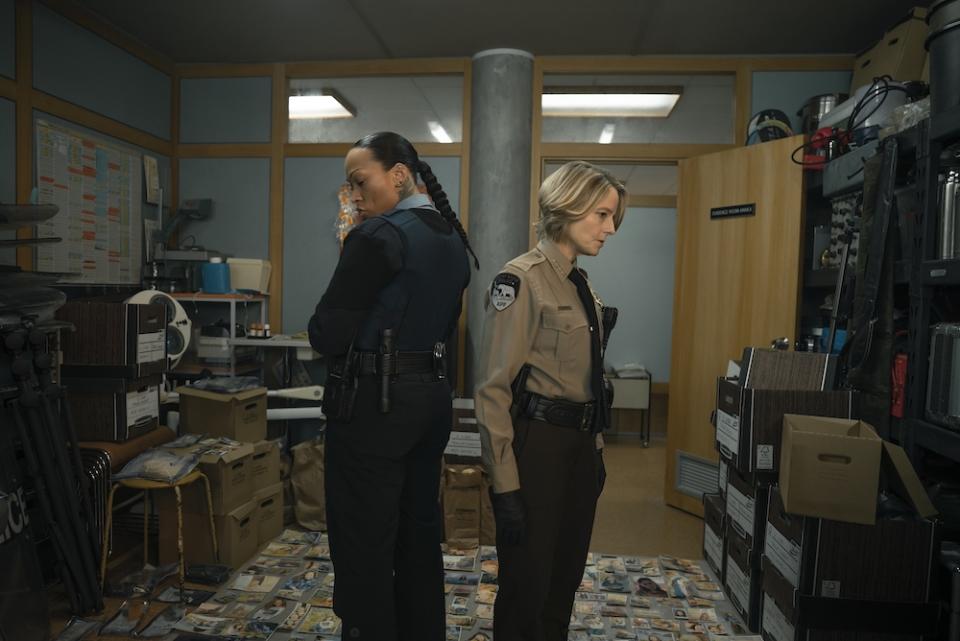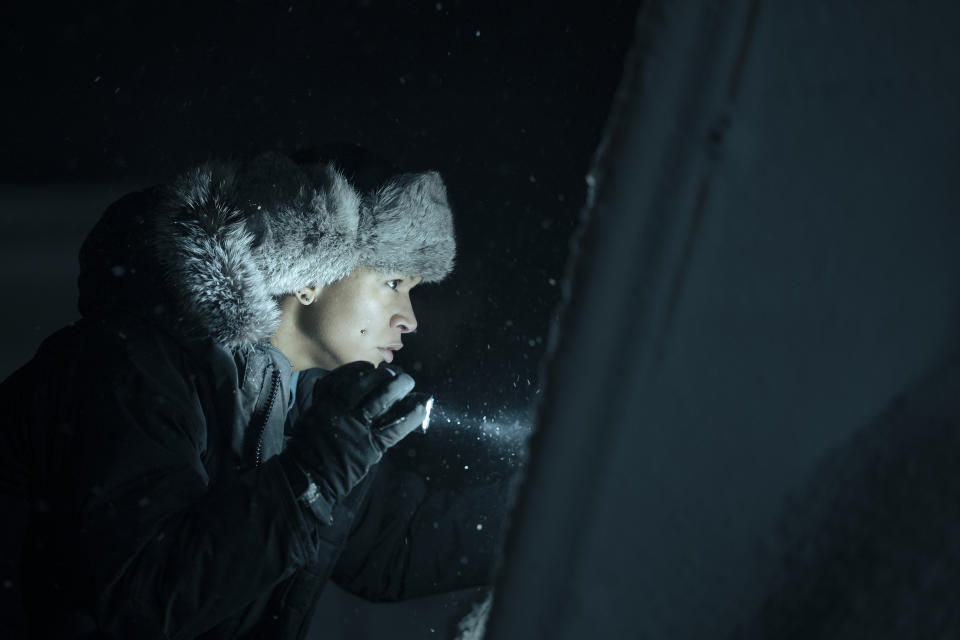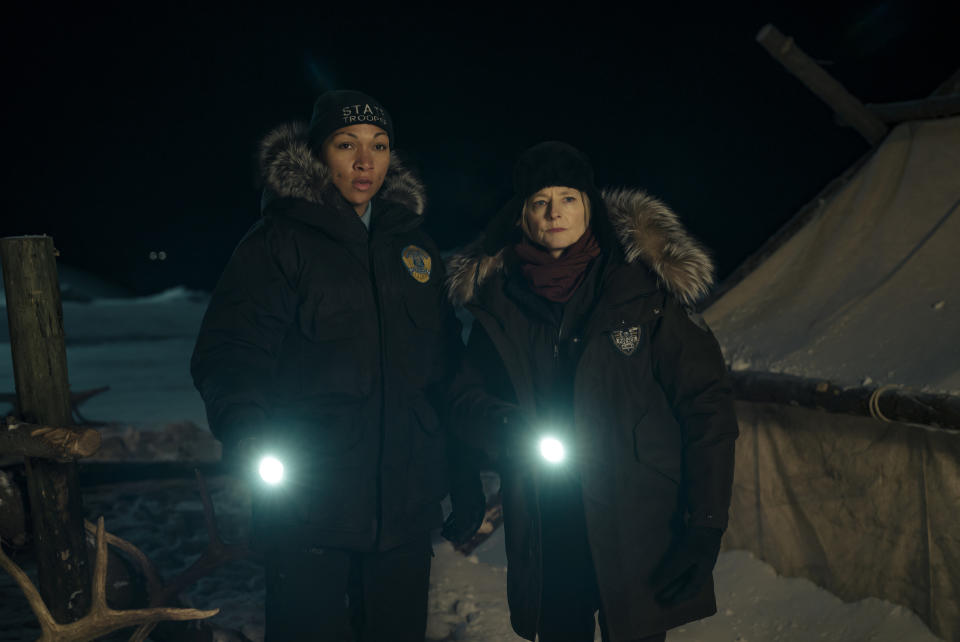Issa López Leaned Into Nasty Women and Icy Ghosts to Craft Her Record-Breaking ‘True Detective: Night Country’


On June 6, the 2024 IndieWire Honors ceremony will celebrate thirteen creators and stars responsible for some of the most stellar work of the TV season. Curated and selected by IndieWire’s editorial team, this event is a new edition of its IndieWire Honors event focused entirely on television. We’re showcasing their work with new interviews leading up to the Los Angeles event.
When HBO invited veteran Mexican writer-director Issa López to tell them what she would do with the fourth iteration of “True Detective,” she already had a mystery premise in her back pocket, an idea about disappearances in the Arctic. HBO developed the story with her, and when “True Detective: Night Country” launched in January 2024, starring Jodie Foster and Kali Reis as two mismatched Alaskan detectives investigating the disturbing disappearance of eight research scientists, it broke records.
More from IndieWire
The “True Detective: Night Country” February 18 finale yielded season-high viewers, pulling 3.2 million across HBO and Max, 57 percent higher than the January “Night Country” premiere. Word-of-mouth built steadily over six episodes, averaging 12.7 million cross-platform watchers, beating the prior three seasons, with a streaming assist from Max.
López didn’t come out of nowhere. The auteur had already succeeded in Mexico when she moved to Los Angeles back in 2009. “Suddenly, the studios were asking what I wanted to do next,” she told IndieWire during a recent interview. Thinking she had the backing for an American version of a movie she wanted to make, “I packed and came.”
Six years later, the writer/director was stuck in classic development hell. She developed project after project. Nothing went forward. “But the feeling that you will make this one keeps you going and going,” she said. “And it took me five years to understand that it was not going to happen. I had lost enough of my children, because you believe in them and you raise them and you nourish them, and then they’re not getting made. I decided that I needed to write something that spoke to me and about my personal pain and experience and I created ‘Tigers Are Not Afraid.'”

López packed her bags again. “I was done,” she said. She shot the feature, which was told through children’s eyes with touches of magical realism, in Mexico. The movie exploded and scored stellar reviews, solid box office returns, and two Ariel Award nominations. “And then the phone started to ring and it was Hollywood again.”
At first she resisted the siren call, but this time the projects were exciting her: “They gave a lot of space for my voice.” When the franchise “True Detective” fell in her lap, she accepted. “The characters are new, the setting is new, it gives all the space to do what you do.” It helped that she loved the first season. “There was more to do with the same feeling of something that speaks to the darkest corners hidden under the carpet of the one room we understand of reality. So I wanted to go there. And that’s how I came back,” she said.
The story she followed came to her in the middle of lockdown as she dragged through her various contract assignments. “One thing I’d never done is a murder mystery,” she said. “They’re an obsession for me, and I didn’t know how to do them. As a personal curiosity: ‘What would I do with one of these?’ So I started to look into old mysteries that I loved when I was a kid. From The Bermuda Triangle, I ran across the Globe Pass Incident, which is the story of some Russian mountaineers that died in very strange circumstances in the Carpathians. I said, ‘What if this group of people was disappearing in the Arctic?'”
She put it away to let it brew. When she got the HBO call a couple of months later, she threw her Arctic disappearance mystery at them: “Louisiana bayou versus Alaska by night,” she said. “And let’s make it female. There was a catalyst. And then it just started to bloom.”
Alas, during lockdown, the writer/director couldn’t visit Alaska. On the map of COVID in America, that state was the reddest. “You couldn’t fly there, it was a mess,” she said. “So I went on social media and took a deep dive into all the YouTube videos and the Instagrams of the people that live in the upper Northwest corner of Alaska, and how the long night passes there and what people cook and what they eat.”
She listened to local Alaska radio stations and followed NatGeo’s “Alaska State Troopers.” “I’m facing the conflicts of these tiny communities in the vastness of nature,” she said. “And I would try to understand the characters and the cadences and the dialogue. The moment that I could jump on a plane and spend time there and eat the food and talk to the people, I did all of that.” Then she rewrote everything.
That included the character she had written for Jodie Foster’s Police Chief Liz Danvers. “From our first meeting, she said, ‘This woman is too nice.’ I wrote a character who was on the edge of losing control. You take that pain that she suffered and use it, combined with the fact that she was born an asshole, then she went through this tragedy, and it only worsened who she is. That’s going to be fascinating to watch. It immediately hit me: ‘How didn’t I think of this?’ Because the marker of brilliant TV often has been a huge antihero that is male, be it Tony Soprano or Don Draper or Mr. White. Here was such an opportunity to have that with a female character. So I jumped at it.”
The plan was always to have Danvers’ partner Navarro be Latina. “I’m fluent in the culture,” said López. “I love the idea of someone that had been a Marine, but the more I understood about the place, the population in these towns is 60 or 70 percent Native, specifically Inupiaq, I understood that it would be a disservice to these people to tell a story about their place where a conflict is solved by people that come from the outside, and it’s not one of them. So I made a decision of making Navarro half-Inuit, and half-Latina; I kept the Dominican part of her, but she’s not in contact with the Latino part because the father was absent. She’s trying to make contact with her Native side. That’s the journey in the show: the way that she reconnects with that part of her.”

Like any master of suspense, López knows how to hook viewers by leading them down many paths, throwing Hitchcockian red herrings at them, keeping them on their toes. “The trick is, as happens in police work, you have to follow a bunch of avenues, and only a few of them are going to pay off,” she said. “But the trick is it can be useless. You can take your characters anywhere, but to take your audience on a journey that will give you nothing in the end is unfair. So what you do is, in the scenes where they’re following a clue that will not lead them directly to the end, they will still find something that seems unimportant. And you put it aside.”
She continued, “Then when you’re following a different lead, that will connect with a little thing you left back there. And, as a fan of crime writing, it’s so much fun. You make those connections. Even when it doesn’t lead you to anything, it is part of the tapestry. And it’s always a great excuse to develop character, in these moments when they’re going through one interview, and the next, and you have them in a car in the expanse. So it’s such a good space to understand who these characters are.”
One accidental flourish took off in audience imaginations. “I do adore the idea that the most mundane things can become eerie in the right context,” she said. “We become scared or emotionally attached to things that have no meaning for someone else. I found that the idea of an orange being haunted, like a sign of approaching fate, was strange and unique. I had a scene that I didn’t even keep in the scripts of Navarro, taking care of a road accident where there were some oranges and then she’s bored and throws one away and it comes back, that scene was not even in the show. But we discovered in the last episode that her mother had a thing for oranges. And the way that certain smells for me — with my father it’s this smell of coffee. Immediately that’s my dad. So a beautiful tropical fruit from warmer weather, coming into the ice, as a reminder of what you cannot see that is beyond the dark, felt interesting and it stayed.”
She did not think of “The Godfather,” but when it came up she recognized its provenance: “That’s absolutely true. This is not the first time in my career that I put something in a show or in a movie that I think came from nowhere. And then later, you go, ‘Oh, my God, that thing actually lives in my DNA, because we’ve seen these movies so many times.’ So it happened when I made ‘Tigers Are Not Afraid’ with a piece of chalk, because that’s in the Guillermo del Toro’s ‘Pan’s Labyrinth.’ And I didn’t remember that until I saw it with Guillermo. And he told me like, ‘Hey, that’s mine.’ Not consciously, but the proximity of death and an orange, it’s such a specific combination, that I’m sure I stole it without realizing it.”

“Night Country” seems split between the mystical Navarro and the practical Danvers. Yet it leaves open for interpretation the strange things that happen. There are ghosts in Ennis. That seems clear. “All the little nuances and little mysteries, if you watch the show carefully, the answers are there,” said López. “And it’s up to you, the audience, to decide if you want to go and and follow the thread of clues that get to the logical explanation of everything. Or if you want to follow the supernatural explanation. My inclination is to mix them. There’s reality and there’s magic. You can decide that it’s just the Long Night, which does have a tremendous effect on you. But also, maybe there are ghosts in Ennis.”
The writer wasn’t thinking about the director when she mapped out “Night Country.” (She writes solo on episodes one, two and six, with help from a different additional writer on three, four, and five.) “That little part of my mind was like, ‘If this happens, then I’m going to end up spending nights and nights and nights and nights out in the ice in the tundra shooting.’ You cannot while you’re writing anything stop to think how complicated it’s going to be to achieve X or Y, because it’s going to shrink your writing, and you have to let go and go for it. I was writing about people falling through the ice and being rescued. I was talking about underground ice tunnels. I was talking about caribou jumping off cliffs. And once the writer is done and delivers to the filmmaker, the filmmaker has to figure it out. You will try anything in order to make it happen before saying it can’t be shot. And if you have the right producer — her name is Mary Jo Winkler — her incredible talent is, ‘Let me figure it out.’ And then we shot everything the way I dreamt. There was nothing that I dreamt up that I couldn’t get.”

The choice of cinematographer was crucial to the look and atmosphere of “Night Country.” It was a long painstaking process. “Florian [Hofmeister] was hard to find because I didn’t know him before this,” she said. “I had seen some of his work, but I never had a sense of him as a DP.” She had closed the search when Winkler told her to check out the cinematographer on the first season of series “The Terror,” which takes place in the North Pole in the ice.
“I wanted to understand how to shoot the ice,” López said. “It turns out that ‘The Terror’ never went to the ice. It was all shot, even the scenes in the Arctic, everything is on a soundstage, which is insane. But in 45 minutes, he had such a clarity of vision of how to shoot the expanse of the Arctic without light at night, because I write this incredible world that you can’t see. He had this theory of light on how to shoot it, how to not fight the darkness, but to embrace it. And I had no idea about ‘Tár.’ He got an Oscar nomination as we were on set, which I completely understood when I saw his work.”
On set during filming, the cast and crew began calling the frozen mass of scientist bodies a “corpsicle.” Two weeks before the end of sound mixing the director referred to the “corpsicle.” One of the sound designers turned to her and said, “You call it that? No one says it in the show.” López called Foster. “I need you to just say, ‘Corpsicle.'” She made an audio recording. “And we put it in two scenes in that episode,” she said. “And it became part of the show.”
So did the director start to go crazy working night after night after night in the icy cold? The film shot in Iceland for logistical reasons, with second units in less accessible Northern Alaska. “No, I was crazy before,” she said. “Just the same as Danvers. So it was fine. And the night is longer and longer and longer. And then we were in the middle of it. And we have three hours of sunlight a day, in the thick of it. It was wonderful. We all got into this mission of telling the story and inhabiting the night and it was cozy. And we would get together by night and then go home by night. Nobody disappeared, died. No ghosts visited us.”
Actually, López did have a weird experience in the North. “We shot a bunch of the scenes up north in Akureyri in Iceland, and the production rented a house that I shared with Mary Jo Winkler and I the first night that I spent there, I came down the stairs: ‘We need to move because I need to shoot and I need to be fresh. There’s something in that room.’ And it was not that I was spooked. ‘This is going to ruin the shooting because there’s voices and steps.’ Mary Jo was like: ‘Go to set. I will fix this.’ The production found some old Icelandic couple that were mediums, and they came to the house and they did an Icelandic cleansing. They said that I had with me an angry male spirit, and then he was fine.”

Unlike some creators who ignore social media, López is obsessed with it. Now she’s a firm believer in the weekly water cooler effect. “The weekly thing creates this system where people get a chance to digest it, talk about it with other people,” she said. “Many, many people watch it two or three times over the week before the next one. They go online, they read about it. Press talk about the previous episode. It baits your anticipation, you get excited. But it’s important to understand how the show is perceived. And, and it was fascinating because it was an constant outpour of passion of love, and rabid hatred.”
She has her own theories about why “Night Country” fermented such strong feelings. Partly, it was the expansion of ‘True Detective’ as the most popular series ever — which didn’t go down well with creator Nic Pizzolatto. “People that didn’t like the series, that’s perfectly fine,” López said. “It’s a TV show, you might love or hate it, but a sector felt deeply aggravated for the show. It took me a moment to realize that this happened in the middle of Taylor Swift overtaking the Super Bowl, and ‘Barbie’ being the biggest box office hit of the of the year. It’s a conflagration of events where March Madness is suddenly female. And Beyoncé is taking over the country music world. That is frightening for a sector of the population. They felt threatened. And one of the most sacred things of their belief system in TV: they love ‘Sopranos’ and ‘Breaking Bad’ and ‘True Detective” that is now taken and made profoundly female, aggressively so. And it created a reaction because it’s a sacred thing for this sector.”
Finally, in “Night Country” López took full advantage of her icy milieu. “We push some of our most important feelings and the things that we have to go through in life,” she said, “into places where they freeze over. And then the huge layer of ice is above them, and we cannot reach them, which is the perfect metaphor with the expanses of ice in the dark, and the characters. In order to access the part of themselves that that they have pushed away and have frozen over, they have to break through the ice, fall through the ice, to be able to come on the other side and understand those feelings. Or they have to walk away into the ice to finally be able to get the part of themselves that they’re missing.”
Next up: HBO has given Season 5 to López, who is currently writing the next six episodes. She’s going even darker this time. She was having so much fun with “Night Country” that when she was in post-production, she told herself, ‘if I were to to do ‘True Detective’ again, what would I do?’ And I found this incredibly dark story and I’m working on it.”
Best of IndieWire
Unsimulated Sex Scenes in Film: 'Nymphomaniac,' 'The Brown Bunny,' 'Little Ashes,' and More
Every Palme d'Or Winner from the Cannes Film Festival, Ranked
The 13 Best Thrillers Streaming on Netflix in May, from 'Fair Play' to 'Emily the Criminal'
Sign up for Indiewire's Newsletter. For the latest news, follow us on Facebook, Twitter, and Instagram.

 Yahoo News
Yahoo News 
